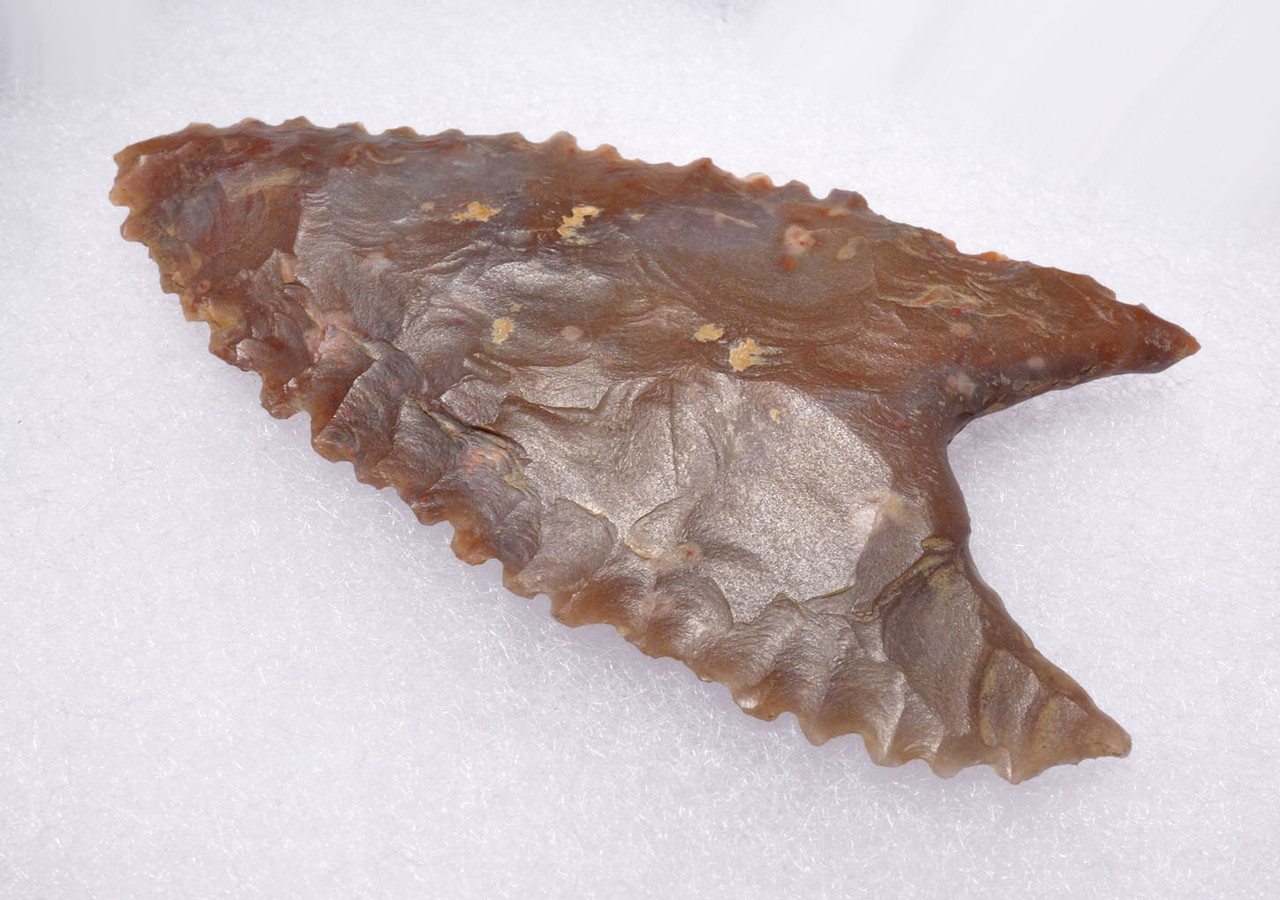Product Description
SEE MORE AFRICAN NEOLITHIC ARROWHEADS
We have been obsessively collecting the finest African Neolithic Capsian spearheads and arrowheads for over 20 years and this specimen comes from a small, select group we have been holding onto for the duration of two decades. We have been to the source in the Sahara, scoured literal buckets and barrels of tens of thousands of arrowheads each year, for many years. Over the past decades, we have also purchased amazing private collections in America and Europe. In all this time, we would set aside the RAREST OF THE RAREST arrowheads of this Neolithic culture, and it is now time for us to sell some from this private, ultra-rare stash. The collection is small and limited and no two are alike. Each represents the highest degree of workmanship that we have ever seen. This is one of those precious specimens from those efforts. The sites where arrowheads like this were once found, have been entirely picked clean for years.
This is a Capsian Neolithic spearhead projectile point called a HOLLOW BASE BARBED SERRATED spearhead. We say 'spearhead' because it is not only large for the style, it is unusually thick. Made of sizable proportions and with a thick cross-section, this arrowhead was likely used as a spearhead and mounted on a throwing shaft as you almost never find arrowheads of this thickness. A unique salmon red and lavender flint was used to for this remarkable large PRESTIGE projectile point. The skill to flake the perfect symmetry, many serrations, and deep hollow base with pointed barbs, would have required the most experienced craftsperson.
Original mineral deposits and patina are intact and deep in the flake hinge fractures and micro-crevices - traits ONLY found in AUTHENTIC specimens.
HISTORY
CAPSIAN TRADITION arrowheads have been found on exposed African Neolithic sites in the Sahara Desert in Northwest Africa. They were made by African Neolithic humans (Homo sapiens sapiens) between 10,000 and 4,700 years ago.
These arrowheads are similar to African Neolithic projectile points known to have been used in human conflict. A late Pleistocene graveyard was discovered at Jebel Sahaba, north of Wadi Halfa in Sudanese Nubia. These burials date from 14,000 to 12,000 years ago. Many people were buried there that had fallen victim to violent deaths with the bodies having been killed by microlithic weapons and small arrowhead projectiles. One man had 110 artifacts associated with his skeleton which had entered his body as stone barbs and points of projectiles. Two of the projectiles were still embedded in his skull.
 US DOLLAR
US DOLLAR
 EURO
EURO
 AUSTRALIAN DOLLAR
AUSTRALIAN DOLLAR
 CANADIAN DOLLAR
CANADIAN DOLLAR
 POUND STERLING
POUND STERLING
























